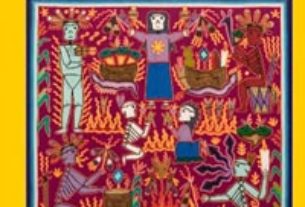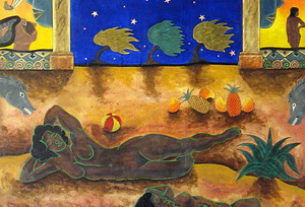This novel is described in several places as a classic of modern Hispanic literature and it really is a powerful book. Since it’s appearance it has been published in more than 27 editions and in several languages.
The edition I just read is a Signet Classic paperback. It comes with a very useful introduction by Ann Castillo, author and American Book Award winner. The introduction serves extremely well to explain the Mexican Revolution to readers like myself. And novelist Mariano Azuela knew what he was writing about, having served as a doctor in Pancho Villa’s army and having participated in several key engagements in that conflict.
The first edition of this novel, published in installments in El Universal Ilustrado, a Mexico City magazine in 1924, bore the subtitle: “Sketches and Scenes of the Mexican Revolution.” And it does have an episodic quality, rather than being a long continuous narrative. It doesn’t attempt to encompass the entire Revolution but, rather, it concentrates on a handful of meaningful encounters throughout, both in battle and in conversations between the various players in the struggle.
The historic background, of course, is that in 1911, Emiliano Zapata, a peasant, rose up against the Madero government demanding agrarian reform with the shout: “Land and Liberty.” His men were mostly Indians, poor, badly fed and poorly armed. As one character explains: “The revolution benefits the poor, the ignorant, all those who have been slaves all their lives, all the unhappy people who do not even suspect they are poor because the rich who stand above them, the rich who rule them, change their sweat and blood and tears into gold…” But in the end, it would seem all they won was a new bunch of corrupt dictators to rule over their lives.
There was little ideology involved in the uprising. There was no Karl Marx to provide intellectual spine and there was no awareness of the French Revolution with its “Liberty, Equality, Fraternity.” Indeed, one of the novel’s two main characters, a student named Luis Cervantes, joins the rebels and attempts to give some philosophic credence to the events. But in the end, he gives up, as did the author himself when he left the country entirely and went to El Paso, Texas, to write his novel.
The other leading character is Demetrio Macias, a naïve, peace-loving Indian who finds himself compelled to join the rebels to save his family. He becomes a successful soldier of the Revolution and eventually ends up leading a sizeable part of Pancho Villa’s army. Part of the story concerns itself with Luis Cervantes’ largely unsuccessful attempts to impart some ideological underpinnings to Macias and the other leaders of the struggle.
However, on both sides, in the government and in the rebel ranks, there is so much treachery, betrayal, cynicism, assassination and lack of moral leadership that the movement can hardly do anything else but fail. When the rebels win some form of victory they aren’t a whole lot better than the people they replace. The poor are still poor. And we still see that even today.
One of the things that strikes you hard when you read this novel with all its skirmishes and full-scale battles is the sheer bloody needless cruelty of the soldiers on both sides of the conflict. Rape, burning people’s homes, torture, massacres of women and children and on and on…. It’s depicted here in all its horror. You initially wonder what people were like, back in those days. But, as one critic has pointed out, this is really a novel about ALL wars. And on television this morning, here in February 2001, I saw Yugoslav war criminals being sentenced in a UN court for precisely the same crimes committed just a few years ago. It’s interesting, too, that Mexico still has its rebels – Los Zapatistas – creating problems in the south. Does anything ever change?
In my humble O: The Underdogs is a very cynical, pessimistic, despairing kind of novel. But if you’re at all interested in Mexican history it’s a powerful and essential read.

The Underdogs (Los de Abajo)
A novel of the Mexican Revolution
By Mariano Azuela
Signet Classic, 1996 ( First published in 1924 as a newspaper serial.)
Available from Amazon Books: Paperback



